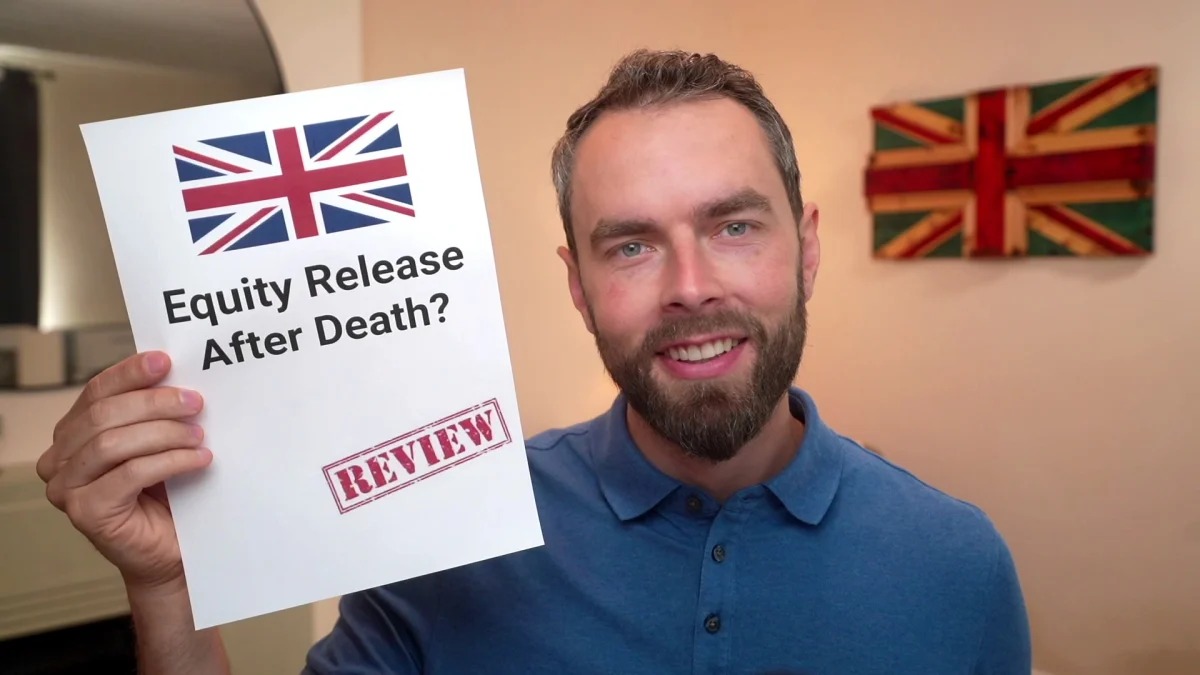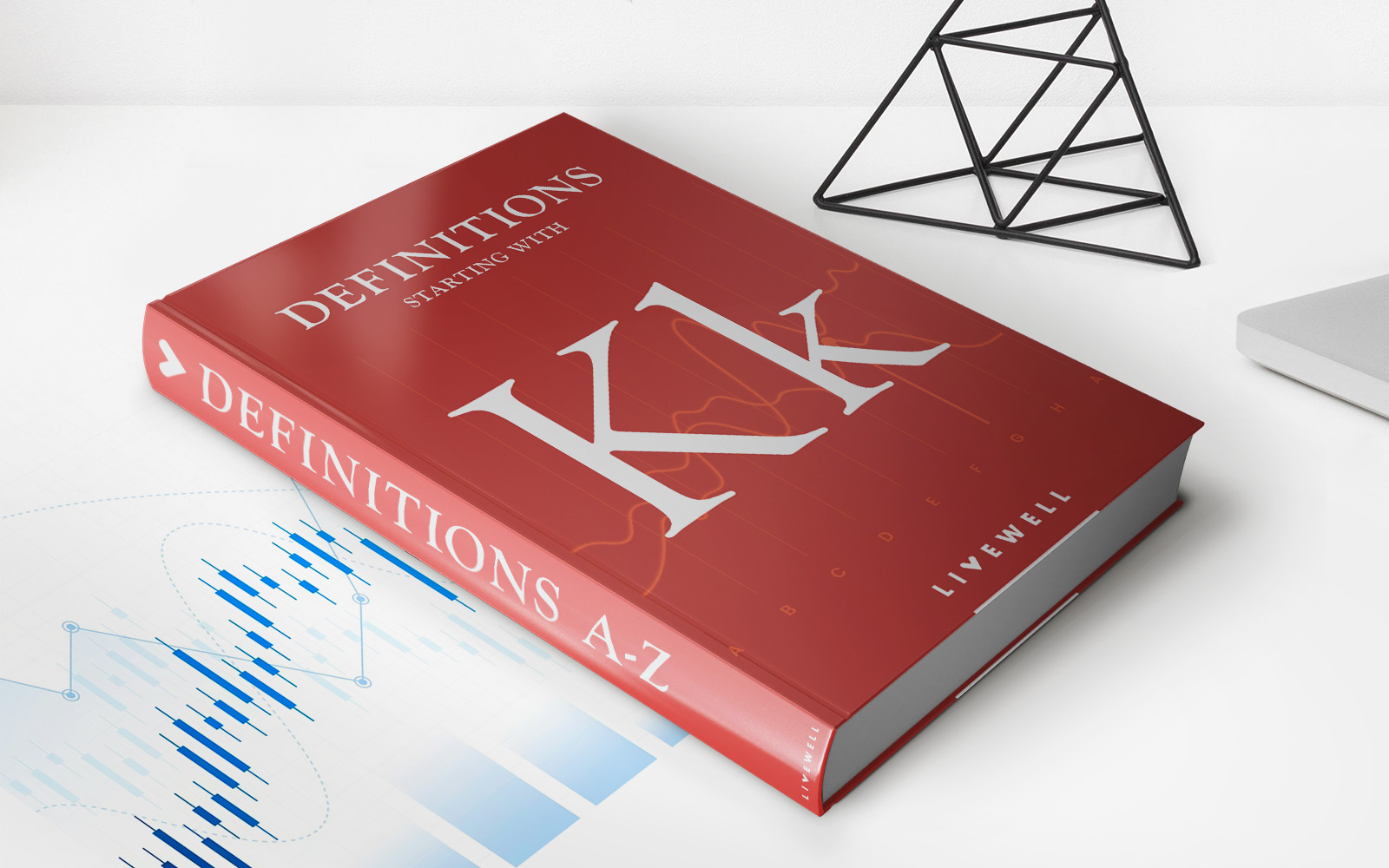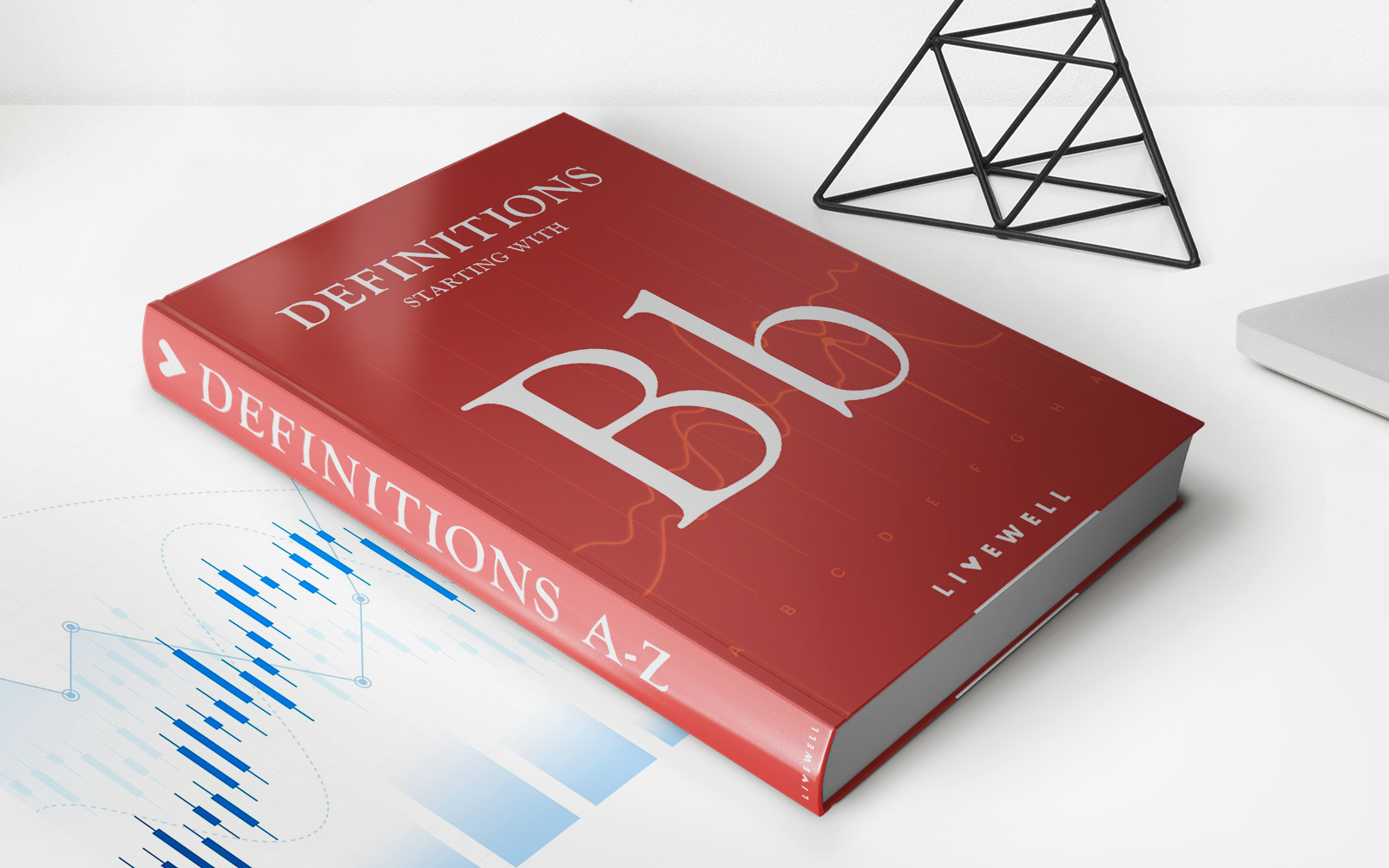

Finance
How To Cash In Savings Bonds After Death
Published: January 16, 2024
Learn how to cash in savings bonds and navigate the process after the death of a loved one. Our finance experts provide step-by-step guidance for handling inherited savings bonds.
(Many of the links in this article redirect to a specific reviewed product. Your purchase of these products through affiliate links helps to generate commission for LiveWell, at no extra cost. Learn more)
Table of Contents
- Introduction
- Understanding Savings Bonds
- What Happens to Savings Bonds After Death?
- Determining Ownership and Beneficiary Information
- Options for Cashing In Savings Bonds After Death
- Option 1: Cashing in Bonds by the Beneficiary
- Option 2: Cashing in Bonds as Part of the Estate
- Option 3: Cashing in Bonds in a Living Trust
- Option 4: Cashing in Bonds through Probate
- Important Considerations and Requirements
- Taxes on Cash-In Savings Bonds After Death
- Conclusion
Introduction
When it comes to financial planning, savings bonds are often considered a safe and reliable investment option. These government-backed securities offer a fixed rate of return over a specified period of time, making them an attractive choice for individuals looking to save for the future.
However, what happens to savings bonds after the bondholder passes away? This is a question that many people have, as they want to ensure that their hard-earned investments are properly handled and can benefit their loved ones. In this article, we will explore the options for cashing in savings bonds after death and provide valuable insights into the process.
Before we delve into the details, it is important to have a basic understanding of how savings bonds work. Savings bonds are issued by the U.S. Department of the Treasury and are considered a low-risk investment. They come in two types: Series EE bonds and Series I bonds. Series EE bonds earn a fixed rate of interest over a period of 20 years, while Series I bonds earn a combination of a fixed rate and an inflation rate that is adjusted every 6 months.
When an individual purchases a savings bond, they become the bondholder, and they can choose to name a beneficiary who will receive the bond’s value upon the bondholder’s death. However, if no beneficiary is named, the bond becomes part of the bondholder’s estate and will be subject to the probate process.
In the following sections, we will explore the various options for cashing in savings bonds after death, including cashing them in by the beneficiary, as part of the estate, in a living trust, or through the probate process. We will also discuss important considerations and requirements to keep in mind during the cash-in process, as well as the tax implications of cashing in savings bonds after death.
Understanding Savings Bonds
Savings bonds are a type of government-backed investment that allows individuals to save money while earning a fixed rate of return. These bonds are issued by the U.S. Department of the Treasury and can be purchased directly from the Treasury or through financial institutions.
There are two main types of savings bonds: Series EE bonds and Series I bonds. Series EE bonds earn a fixed rate of interest over a period of 20 years, while Series I bonds earn a combination of a fixed rate and an inflation rate that is adjusted every 6 months.
When you purchase a savings bond, you become the bondholder. The bond is registered in your name, and you have the option to name a beneficiary who will receive the bond’s value upon your death. If you choose not to name a beneficiary, the bond becomes part of your estate and will be subject to the probate process.
Savings bonds have some unique features that make them attractive to investors. They are considered very safe investments since they are backed by the U.S. government. They also have a low minimum investment requirement, which makes them accessible to a wide range of individuals.
Another benefit of savings bonds is the tax advantages they offer. The interest earned on savings bonds is generally exempt from state and local taxes. Additionally, if the funds from the bond are used for qualified education expenses, the interest may also be tax-free at the federal level.
Savings bonds also have some limitations to be aware of. They have a fixed rate of return, which means you may not benefit from higher interest rates in the future. Furthermore, if you need to access the funds before the bond reaches its maturity date, you may incur penalties and lose some of the interest earned.
Overall, savings bonds can be a valuable addition to your investment portfolio. They offer stability and tax advantages, making them an attractive option for long-term savings goals. However, it’s important to understand the rules and regulations surrounding savings bonds, especially when it comes to cashing them in after death.
What Happens to Savings Bonds After Death?
When a bondholder passes away, it is important to understand what happens to their savings bonds. The course of action will depend on various factors, including whether a beneficiary is named, the ownership structure of the bonds, and the specific instructions outlined in the bondholder’s estate planning documents.
If a beneficiary is named on the savings bond, the process becomes relatively straightforward. The named beneficiary simply needs to provide proof of the bondholder’s death and their own identity, along with the necessary documentation required by the Treasury Department. Once these documents are submitted, the beneficiary can then choose the appropriate option for cashing in the bonds.
However, if no beneficiary is named on the savings bond, the bond becomes part of the bondholder’s estate. In this case, the savings bonds will go through the probate process, which involves validating the bondholder’s will, paying off any outstanding debts and taxes, and distributing the remaining assets, including the savings bonds, according to the terms of the will or the laws of the state.
In some cases, the bondholder may have set up a living trust as part of their estate planning. If the savings bonds are held within the living trust, they can be transferred to the designated beneficiaries without going through probate. The trustee of the living trust will handle the process of cashing in the bonds and distributing the proceeds.
It’s important to note that the process for cashing in savings bonds after death may differ depending on the ownership structure. If the bonds are co-owned, such as joint tenants with right of survivorship or tenants in common, the surviving co-owner may have the right to claim the bonds as their own and continue to hold them or cash them in.
In situations where the bondholder had no beneficiary named, no living trust, and no co-owner, the savings bonds may need to go through the probate process. This typically involves appointing an executor or personal representative who will handle the bondholder’s estate and ensure that all assets, including the savings bonds, are distributed according to the will or the laws of the state.
In the next sections, we will explore the various options for cashing in savings bonds after death, including cashing them in by the beneficiary, as part of the estate, through a living trust, or through the probate process. Understanding these options can help ensure a smooth transition and proper handling of savings bonds after the bondholder’s passing.
Determining Ownership and Beneficiary Information
When it comes to cashing in savings bonds after death, one of the first steps is to determine the ownership and beneficiary information associated with the bonds. This information is crucial in determining how the bonds should be handled and who has the right to claim them.
If you are the surviving beneficiary of the savings bonds, the process may be relatively straightforward. You should gather the necessary documents, such as the bondholder’s death certificate, your own identification documents, and any additional paperwork required by the Treasury Department. You will then need to contact the appropriate institution, whether that is the Treasury or a financial institution, to initiate the process of cashing in the bonds.
In cases where there is no designated beneficiary on the savings bonds, the ownership of the bonds will be determined by the bond registration. The registration will show who is listed as the owner or co-owner of the bonds. If you are the surviving co-owner, you may be able to claim ownership of the bonds and continue to hold them or cash them in as needed.
If there is no surviving beneficiary or co-owner, the bonds will be considered part of the bondholder’s estate. In this case, the bonds will typically go through the probate process, where an executor or personal representative will handle the distribution of the assets, including the savings bonds, according to the bondholder’s will or the laws of the state.
It’s important to review the bondholder’s estate planning documents, including their will and any living trust, to determine if there are specific instructions for handling the savings bonds after death. These documents may provide guidance on who should receive the bonds and how they should be cashed in.
If you are unsure about the ownership or beneficiary information of the savings bonds, you may need to reach out to the Treasury Department or the financial institution where the bonds were purchased. They can help you verify the ownership and beneficiary status of the bonds and provide guidance on the next steps to take.
By determining the ownership and beneficiary information of the savings bonds, you can ensure that the proper individuals are involved in the cashing-in process and that the bonds are handled according to the bondholder’s wishes or the applicable laws. This step is crucial in facilitating a smooth transfer of the bonds and minimizing any potential complications during the cash-in process.
Options for Cashing In Savings Bonds After Death
After the death of a savings bondholder, there are several options for cashing in the bonds. The specific option that should be pursued depends on factors such as whether a beneficiary is named, the ownership structure of the bonds, and the instructions outlined in the bondholder’s estate planning documents. Here are the key options to consider:
Option 1: Cashing in Bonds by the Beneficiary
If the savings bonds have a named beneficiary, this individual has the right to claim the bonds after providing the necessary documentation. The beneficiary will need to present proof of the bondholder’s death and their own identification. Upon verification, the beneficiary can choose to cash in the bonds or continue holding them until maturity.
Option 2: Cashing in Bonds as Part of the Estate
If there is no designated beneficiary or the bonds are part of the bondholder’s estate, they will typically go through the probate process. The executor or personal representative of the estate will be responsible for handling the cashing-in process. They will need to gather the necessary documentation, such as the bondholder’s death certificate and any relevant legal documents, and follow the procedures set forth by the Treasury Department to cash in the bonds.
Option 3: Cashing in Bonds in a Living Trust
If the savings bonds are held within a living trust, the trustee of the trust will be responsible for cashing them in. The trustee should follow the instructions and guidelines laid out in the trust document to ensure a smooth transfer of the bonds and the distribution of the proceeds to the designated beneficiaries.
Option 4: Cashing in Bonds through Probate
If the bonds are part of the probate process and there is no named beneficiary or living trust, they will be handled by the executor or personal representative as part of the estate administration. The executor will need to follow the applicable probate laws and procedures to cash in the bonds and distribute the proceeds to the beneficiaries or creditors according to the will or the laws of the state.
It is important to note that the process for cashing in savings bonds after death may vary depending on the specific circumstances and any instructions provided in the bondholder’s estate planning documents. Seeking professional guidance from an attorney or financial advisor experienced in estate planning and probate matters can help ensure the proper handling of the savings bonds and adherence to legal requirements.
In the next sections, we will delve deeper into each of these options, exploring the specific steps and considerations involved in cashing in savings bonds after death. Understanding these options will help individuals navigate the process and make informed decisions based on their unique situations.
Option 1: Cashing in Bonds by the Beneficiary
If you are designated as the beneficiary of the savings bonds, you have the right to claim and cash in the bonds after the bondholder’s death. This option allows for a relatively straightforward process, provided you have the necessary documentation and follow the required steps. Here’s what you need to know:
1. Gather the required documents: To begin the process, you will need to collect the necessary documents, including the original bond certificates, the bondholder’s death certificate, and your own identification documents. Make sure you have the proper paperwork before proceeding to the next steps.
2. Notify the appropriate institution: Contact the institution from where the bonds were purchased or the Treasury Department’s Bureau of the Fiscal Service to inform them of the bondholder’s death. They will provide further instructions and guidance on how to proceed with cashing in the bonds as the beneficiary.
3. Complete the necessary paperwork: The institution or Treasury Department will provide you with the required forms to complete. These forms typically include information about the bondholder, your relationship as a beneficiary, and your personal details. Fill out the forms accurately and ensure all the necessary information is provided.
4. Provide proof of death and identification: Along with the completed forms, you will need to submit proof of the bondholder’s death, such as a certified copy of the death certificate. Additionally, you will be required to provide identification documents to verify your own identity. Follow the instructions provided by the institution or Treasury Department regarding acceptable forms of identification.
5. Choose the cashing-in option: Once all the paperwork and documentation are in order, you will have the option to choose how you want to cash in the savings bonds. You can decide to redeem them and receive the full face value of the bonds, or you may choose to continue holding them until maturity. Consider the current interest rates and your financial goals to make an informed decision.
6. Receive the proceeds: After processing your request, the institution or Treasury Department will send you the proceeds from the cashed-in bonds. The funds will typically be deposited into your designated bank account or sent to you in the form of a check, depending on your preference and their policies.
It’s important to note that the process and requirements for cashing in savings bonds as a beneficiary may vary slightly depending on the institution and the specific circumstances. Be sure to follow the instructions provided by the respective organization and reach out to their customer service if you have any questions or need assistance.
In the next sections, we will explore the other options for cashing in savings bonds after death, including cashing them in as part of the estate, through a living trust, or through the probate process. Each option has its own considerations and requirements, so understanding them will help you make the best decision based on your situation.
Option 2: Cashing in Bonds as Part of the Estate
When savings bonds are not designated with a beneficiary, they become part of the bondholder’s estate after their death. Cashing in these bonds as part of the estate involves going through the probate process, where the estate’s assets are distributed according to the bondholder’s will or the laws of intestacy if there is no will. Here’s what you need to know about this option:
1. Consult the bondholder’s will: The first step is to review the bondholder’s will, if one exists. Their will may specify instructions regarding the treatment of savings bonds after their death. Take note of any provisions or specific instructions mentioned regarding the cashing in of the bonds and distribute them accordingly.
2. Engage an executor or personal representative: If there is a will, it is likely that an executor has been named to oversee the probate process. If there is no named executor, the court will appoint a personal representative. The executor or personal representative will be responsible for handling the cashing-in process for the savings bonds along with other estate matters.
3. Gather necessary documentation: The executor or personal representative should collect all relevant documents, including the bondholder’s death certificate, the will, and any other legal documents related to the estate. These documents will be needed to prove the bondholder’s passing and to initiate the cashing-in process.
4. Navigate the probate process: The probate process involves validating the will, paying off any outstanding debts and taxes, and distributing the assets among the beneficiaries. This process can vary depending on local laws and the complexity of the estate. It is advisable to seek the guidance of an attorney experienced in probate matters to ensure compliance with legal requirements.
5. Contact the Treasury or financial institution: Once the necessary legal procedures have been completed, the executor or personal representative should contact the Treasury Department or the financial institution from which the savings bonds were purchased. They will provide the necessary instructions and forms to initiate the cashing-in process.
6. Fill out the required paperwork: The executor or personal representative will need to complete the necessary paperwork provided by the Treasury Department or financial institution. This typically involves providing information about the bondholder, death certificate, and proof of their authority to act on behalf of the estate.
7. Choose the cashing-in option: Similar to cashing in as a beneficiary, the executor or personal representative will have the option to redeem the savings bonds for their full face value or retain them until maturity. Consider factors such as current interest rates and the financial needs of the estate when making this decision.
8. Distribute the proceeds: Once the savings bonds have been cashed in, the proceeds will become part of the estate’s assets. The executor or personal representative will be responsible for distributing the funds according to the terms of the will or the laws of intestacy.
During the process of cashing in savings bonds as part of the estate, it is essential to adhere to legal requirements and consult professionals experienced in probate matters to ensure a smooth and accurate distribution of assets. In the next sections, we will explore additional options for cashing in savings bonds after death, including using a living trust or going through the probate process.
Option 3: Cashing in Bonds in a Living Trust
If the savings bonds are held within a living trust, the process of cashing them in after the bondholder’s death can be more streamlined. A living trust is a legal entity created to hold assets during the lifetime of an individual and facilitate their distribution upon their death. Here’s what you need to know about cashing in savings bonds held in a living trust:
1. Review the living trust document: The first step is to carefully review the living trust document to determine how the savings bonds are addressed. The trust document should outline instructions for the handling and distribution of these assets after the bondholder’s death.
2. Identify the trustee: In a living trust, the trustee is the individual or institution responsible for managing the assets held within the trust. The trustee is typically named in the trust document. If you are named as the trustee, you will have the authority to handle the cashing-in process for the savings bonds.
3. Gather necessary documentation: As the trustee, gather all relevant documents, including the bondholder’s death certificate, the trust document, and any other legal papers associated with the living trust. These documents will be needed to prove the bondholder’s passing and your authority to act on behalf of the trust.
4. Contact the Treasury or financial institution: Once you have the necessary documentation, reach out to the Treasury Department or the financial institution from which the savings bonds were purchased. Inform them that the bonds are held within a living trust and follow their instructions for initiating the cashing-in process.
5. Complete the required paperwork: The Treasury Department or financial institution will provide you with the necessary forms to complete to cash in the savings bonds held in the living trust. Fill out the paperwork accurately, providing the required information about the bondholder and the trust.
6. Choose the cashing-in option: Similar to other options, you will have the choice to redeem the savings bonds for their full face value or retain them until maturity. Consider factors such as current interest rates and the financial goals of the trust when making this decision.
7. Disburse the proceeds: After the savings bonds have been cashed in, the proceeds become assets of the living trust. As the trustee, you will be responsible for distributing the funds according to the instructions outlined in the trust document. Follow the guidelines to ensure the funds are disbursed correctly to the designated beneficiaries or as specified by the bondholder.
It’s important to consult with an attorney experienced in estate planning and trust administration to ensure compliance with legal requirements and properly administer the living trust. They can provide guidance and assist in navigating the details of cashing in savings bonds held within a living trust.
Next, we will explore the option of cashing in savings bonds through the probate process, which is required when there is no beneficiary designation or living trust present.
Option 4: Cashing in Bonds through Probate
When a bondholder passes away without designating a beneficiary or setting up a living trust, the savings bonds will typically go through the probate process. Probate is a legal procedure that involves validating the bondholder’s will, paying off debts and taxes, and distributing assets according to the terms of the will or the laws of intestacy if there is no will. Here’s what you need to know about cashing in savings bonds through probate:
1. Consult an attorney: The first step is to consult an attorney who specializes in probate matters. They will guide you through the probate process and ensure compliance with local laws and regulations. The attorney can assist with gathering necessary documents and fulfilling legal requirements.
2. Determine the executor or personal representative: The court will appoint an executor or personal representative to oversee the probate process. This individual will be responsible for administering the estate, including handling the cashing-in process for the savings bonds. The executor or personal representative should work closely with the attorney and follow their guidance throughout the process.
3. Gather necessary documents: As part of the probate process, gather all relevant documentation, including the bondholder’s death certificate, the will (if one exists), and any other legal papers associated with the estate. These documents will be crucial in proving the bondholder’s passing and initiating the cashing-in process for the savings bonds.
4. Notify the Treasury or financial institution: Once the necessary documentation is collected, contact the Treasury Department or the financial institution from which the savings bonds were purchased. Inform them of the bondholder’s death and provide the required paperwork to initiate the cashing-in process through probate. They will guide you through the specific procedures and forms needed.
5. Complete the required paperwork: The Treasury Department or financial institution will provide you with the necessary forms to complete the cashing-in process through probate. Provide accurate information about the bondholder and the estate, ensuring all required details are included. Follow the instructions provided and return the completed paperwork promptly.
6. Choose the cashing-in option: Similar to other options, you will need to decide to redeem the savings bonds for their full face value or retain them until maturity. Consider factors such as current interest rates and the needs of the estate when making this decision. Consult with the attorney and the executor or personal representative to ensure the decision aligns with the best interests of the estate.
7. Distribute the proceeds: Once the savings bonds have been cashed in, the proceeds become part of the estate’s assets. The executor or personal representative, with guidance from the attorney, will be responsible for distributing the funds according to the terms of the will or the laws of intestacy. Ensure that the distribution is carried out accurately and in line with the bondholder’s wishes or legal requirements.
Working with an experienced attorney during the probate process is crucial to ensure that all legal obligations are met and the distribution of assets, including savings bonds, is handled properly. They can provide valuable guidance and support, reducing the complexity and potential challenges associated with probate.
In the following sections, we will discuss important considerations and requirements to keep in mind during the cash-in process for savings bonds after death, as well as the tax implications of cashing in savings bonds.
Important Considerations and Requirements
When cashing in savings bonds after a bondholder’s death, there are several important considerations and requirements to keep in mind. Understanding these factors will help ensure a smooth and efficient cashing-in process. Here are some key points to consider:
Documentation:
Proper documentation is crucial when cashing in savings bonds after death. You will generally need to provide the bondholder’s death certificate, your own identification documents, and any additional paperwork required by the Treasury Department or financial institution. Make sure to gather all necessary documents before initiating the cashing-in process.
Ownership and Beneficiary Information:
It is essential to determine the ownership and beneficiary information associated with the savings bonds. If there is a named beneficiary, the process may be simpler as the beneficiary has the right to claim and cash in the bonds. If no beneficiary is named, the bonds become part of the bondholder’s estate and may go through the probate process.
Proper Instructions and Wishes:
Review the bondholder’s estate planning documents, including the will or living trust, to ensure you understand any specific instructions or wishes regarding the cashing in of savings bonds. Following these instructions will ensure that the bonds are handled in line with the bondholder’s desires and minimize any potential disputes among beneficiaries.
Professional Guidance:
Considering the complexities of estate planning and probate, it is advisable to seek professional guidance from an attorney or financial advisor experienced in these matters. They can help clarify any legal requirements, offer valuable advice, and ensure the cashing-in process complies with applicable laws and regulations.
Timing:
Be aware that there may be a time limit for cashing in savings bonds after the bondholder’s death. It is important to initiate the process in a timely manner to avoid the bonds becoming unclaimed property or facing potential complications. Prompt action will help ensure a smooth transition and avoid any unnecessary delays.
Tax Implications:
Cashing in savings bonds after death may have tax implications. The interest earned on the bonds is generally subject to federal income tax, but it may be exempt from state and local taxes. Consult with a tax professional to understand the specific tax implications based on your circumstances and ensure compliance with tax laws.
By considering these important factors, gathering the necessary documentation, and seeking professional guidance where necessary, you can navigate the cashing-in process for savings bonds after death more effectively. This will help ensure a seamless transfer of assets and minimize any potential complications or disputes.
In the next section, we will discuss the tax implications of cashing in savings bonds after death, providing an overview of the key considerations and requirements.
Taxes on Cash-In Savings Bonds After Death
When it comes to cashing in savings bonds after the death of a bondholder, it is important to understand the tax implications involved. Here is an overview of the key considerations and requirements regarding taxes on cashed-in savings bonds:
Accrued Interest:
When savings bonds are cashed in, the bondholder or their estate will need to report any accrued interest as taxable income for the tax year in which the bonds are redeemed. This interest is subject to federal income tax but generally exempt from state and local taxes.
Form 1099-INT:
The financial institution responsible for redeeming the savings bonds will typically issue a Form 1099-INT to the bondholder or their estate, reporting the amount of accrued interest earned on the bonds. This form is used to report the interest income on the bondholder’s federal income tax return.
Reporting Interest on Estate Tax Return:
If the bondholder’s estate is subject to estate taxes, the interest earned on the savings bonds should be included on the estate tax return (Form 706). The savings bonds will be valued at their full face value as of the date of death, and any accrued interest up to that date will be reported as part of the estate’s taxable income.
Educational Exception:
One potential tax advantage of cashing in savings bonds after death is the educational exception. If the funds from the bonds are used to pay for qualified education expenses, such as tuition and fees, for the bondholder’s beneficiary or their dependents, the interest may be tax-free at the federal level.
Losses on Cash-In:
It is important to note that if the cashed-in savings bonds result in a loss, it generally cannot be used to offset taxable income. Savings bond losses are generally not deductible for tax purposes.
It is recommended to consult with a tax professional to fully understand the tax implications and requirements of cashing in savings bonds after death. They can provide guidance specific to your situation and help ensure compliance with tax laws. Additionally, they can help you maximize any available tax benefits related to savings bonds.
Understanding the tax considerations when cashing in savings bonds after the death of a bondholder is crucial. By properly accounting for the accrued interest and following the necessary reporting procedures, you can fulfill your tax obligations and optimize the use of savings bonds within the confines of the tax laws.
In the following section, we will conclude by summarizing the key points discussed in this article on cashing in savings bonds after death.
Conclusion
Cashing in savings bonds after the death of a bondholder requires careful consideration and adherence to specific processes. By understanding the options available and the requirements involved, individuals can navigate this process smoothly and ensure the proper handling of savings bonds. Here are the key points to remember:
– If a beneficiary is named on the savings bond, they have the right to claim and cash in the bonds after providing the necessary documentation.
– If no beneficiary is named, the bonds become part of the bondholder’s estate and may go through the probate process. Executors or personal representatives will be responsible for handling the cashing-in process in this case.
– Savings bonds held within a living trust can be cashed in by the trustee of the trust, bypassing the need for probate.
– Proper documentation, such as death certificates and identification, is essential when cashing in savings bonds after death.
– Seeking professional guidance from an attorney or financial advisor experienced in estate planning and probate matters can ensure compliance with legal requirements.
– Tax considerations play a crucial role, as accrued interest on the savings bonds is generally subject to federal income tax, but may be exempt from state and local taxes. Consult with a tax professional to understand the specific tax implications and potential benefits.
By carefully navigating the cashing-in process, individuals can ensure a smooth transition of savings bonds and properly distribute the assets according to the bondholder’s wishes. Remember to gather the necessary documentation, consult professionals when needed, and meet all legal and tax requirements along the way. Following these steps will help honor the bondholder’s legacy and maximize the benefits of savings bonds for the intended recipients.
It is important to note that this article provides an overview of the general principles and considerations regarding cashing in savings bonds after death. Specific circumstances may vary, and it is recommended to consult with professionals and review the applicable laws to ensure the accurate handling of savings bonds in each individual case.














